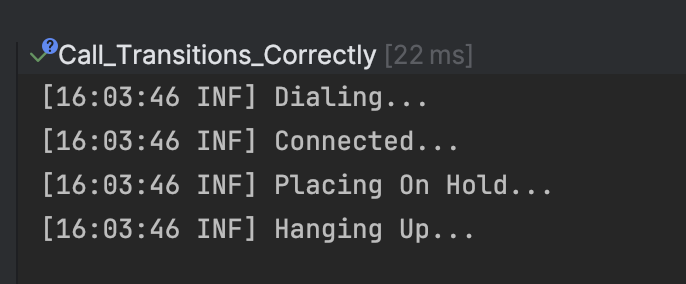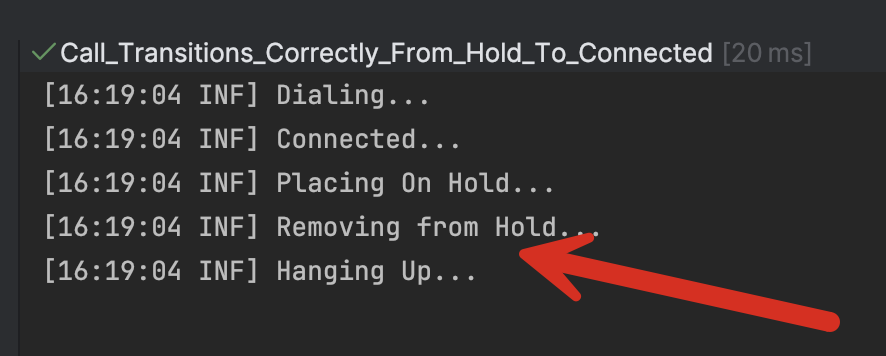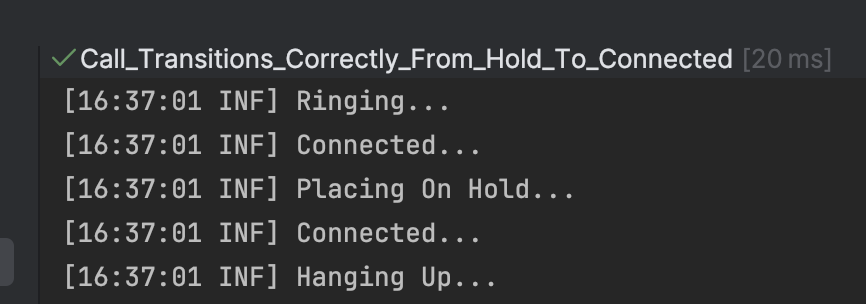Using State Machines In .NET - Part 6 - Firing Events On State Change
[C#, .NET, Stateless, StarLibrary]
This is Part 6 of a series on using State Machines to express complex logic.
- Using State Machines In .NET - Part 1 - Introduction
- Using State Machines In .NET - Part 2 - Basic Usage
- Using State Machines In .NET - Part 3 - Setting Initial State
- Using State Machines In .NET - Part 4 - Using Multiple Triggers
- Using State Machines In .NET - Part 5 - Using Complex & Nested States
- Using State Machines In .NET - Part 6 - Firing Events On State Change (This Post)
- Using State Machines In .NET - Part 7 - Conditional State Transitions
- Using State Machines In .NET - Part 8 - Firing Events Before State Change
- Using State Machines In .NET - Part 9 - Calling Asynchronous Methods
- Using State Machines In .NET - Part 10 - Generating State Diagrams
- Using State Machines In .NET - Part 11 - Logic Based On How A State Was Transitioned
- Using State Machines In .NET - Part 12 - State Activation & Entry
Our last post examined how to model complex & nested states.
In this post we will look at how to tackle how to use events during state transitions.
Let us recap the state transition diagram for a Call.

Our transitions looked like this:
public void Dial()
{
_stateMachine.Fire(Trigger.Dial);
}
public void HangUp()
{
_stateMachine.Fire(Trigger.HangUp);
}
public void PickUp()
{
_stateMachine.Fire(Trigger.PickUp);
}
public void Hold()
{
_stateMachine.Fire(Trigger.Hold);
}
public void UnHold()
{
_stateMachine.Fire(Trigger.UnHold);
}
No suppose we were to wire in some hardware to do the actual logic.
To simplify the code, let us assume logging modeled the hardware.
It would now look like this:
public void Dial()
{
Log.Information("Dialing...");
_stateMachine.Fire(Trigger.Dial);
}
public void HangUp()
{
Log.Information("Hanging Up...");
_stateMachine.Fire(Trigger.HangUp);
}
public void PickUp()
{
Log.Information("Connected...");
_stateMachine.Fire(Trigger.PickUp);
}
public void Hold()
{
Log.Information("Placing On Hold...");
_stateMachine.Fire(Trigger.Hold);
}
public void UnHold()
{
Log.Information("Removing from Hold...");
_stateMachine.Fire(Trigger.UnHold);
}
We can then wire some a test to make sure a Call outputs the correct output.
[Fact]
public void Call_Transitions_Correctly()
{
var call = new Call();
call.Dial();
_output.Output.Should().EndWith("Dialing...\n");
call.PickUp();
_output.Output.Should().EndWith("Connected...\n");
call.Hold();
_output.Output.Should().EndWith("Placing On Hold...\n");
call.HangUp();
_output.Output.Should().EndWith("Hanging Up...\n");
}
In the logs we can see the results:

So far so good.
The problem arises when we place a call on Hold, and then back to Connected.
[Fact]
public void Call_Transitions_Correctly_From_Hold_To_Connected()
{
var call = new Call();
call.Dial();
_output.Output.Should().EndWith("Dialing...\n");
call.PickUp();
_output.Output.Should().EndWith("Connected...\n");
call.Hold();
_output.Output.Should().EndWith("Placing On Hold...\n");
call.UnHold();
_output.Output.Should().EndWith("Removing from Hold...\n");
call.HangUp();
}
This test passes, but the log shows the following:

It is missing where it prints the Connected … message.
If need be, we can update the UnHold method to print this. But you would have to do this on all methods that transition to OnHold. This would mean loss of context.
Given there are multiple ways to transition to connected we cannot place the code on the methods themselves.
Stateless supports this scenario by exposing an event that you can write your code within - OnEntry()
The state machine can be updated as follows:
private Call(Status status)
{
_stateMachine = new StateMachine<Status, Trigger>(status);
//
// Configure state machine
//
_stateMachine.Configure(Status.Ready)
.Permit(Trigger.Dial, Status.Ringing);
_stateMachine.Configure(Status.Ringing)
.Permit(Trigger.PickUp, Status.Connected)
.Permit(Trigger.HangUp, Status.Ready)
.OnEntry(() => Log.Information("Ringing..."));
_stateMachine.Configure(Status.Connected)
.Permit(Trigger.Hold, Status.OnHold)
.Permit(Trigger.HangUp, Status.Ready)
.OnEntry(() => Log.Information("Connected..."));
_stateMachine.Configure(Status.OnHold)
.PermitIf(Trigger.UnHold, Status.Connected)
.PermitIf(Trigger.HangUp, Status.Ready)
.OnEntry(() => Log.Information("Placing On Hold..."));
_stateMachine.Configure(Status.Ready)
.OnEntry(() => Log.Information("Hanging Up..."));
}
If we run our tests, we should see the following in the console:

Thus we can see regardless of how the state was set, the correct logic will fire.
In our next post we will look at conditional firing of triggers.
TLDR
The OnEntry() event allows for logic to fire whenever the state changes.
The code is in my GitHub.
Happy Hacking!